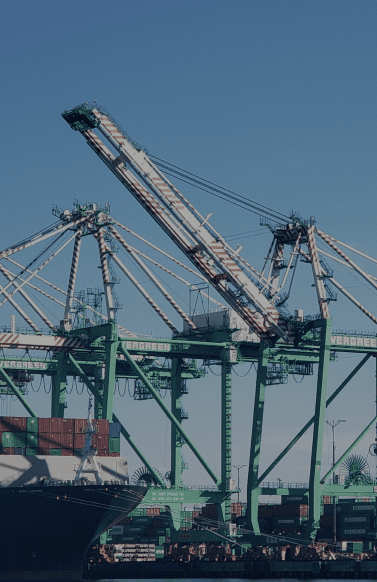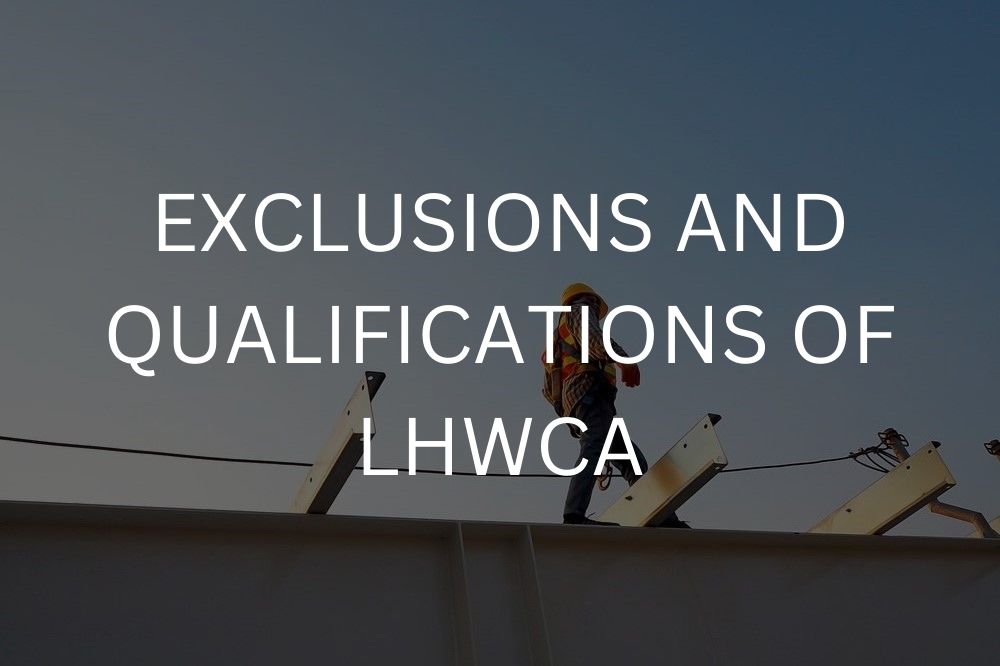
The Longshore Harbor Workers' Compensation Act is a law under the federal government. This act offers compensation for vocational rehabilitation and medical care services to workers who have suffered disability caused by work-related disease or in the adjoining areas typically used for building, repairing, unloading, or loading a vessel.
LHWCA also offers survivor compensation to the dependents of the workers in case the injuries result in the employee's death. The private insurance company pays these compensations on behalf of the employer or the self-insured employer.
Having an experienced workers’ compensation lawyer is vital to ensure you receive the right compensation for your injuries and suffering. The Law Office of Andrea R. Herman has extensive experience representing employees in Los Angeles, CA, and ensuring they get the right benefits.

Maritime employees who suffer injuries in California and other states have to meet the situs and status test to be eligible for the benefits under LHWCA. The employees who are not eligible for LHWCA may still get compensation under the state workers’ compensation. The LHWCA benefits are generally more generous as compared to the benefits provided under state workers’ compensation.
However, LHWCA benefits are only eligible for employees who meet the status and situs tests, which are as follows:
This test is related to the type of work the employee performs for their employer. To be eligible for LHWCA benefits, the employee should be doing at least some type of maritime-related work, meaning the work should be related to marine or water transport.
Multiple classes of workers are eligible for LHWCA benefits, including longshoremen, workers assisting in loading and unloading shipbreakers, shipbuilders, ship repairmen, and vessels, truck drivers taking shipping containers, and mechanics repairing the trucks.
However, all employees working for a maritime employer don’t meet the requirements of the status test. The main criteria to be eligible for LHWCA benefits is that the employee must have some maritime duties, meaning employees performing desk duties are not qualified even if they are working for a maritime employee.
Other workers that are not eligible under LHWCA are as follows:
The other requirement for LHWCA eligibility is the situs test, which is the location-related test. This means the location where the workers usually work for the maritime employer. The employees who work adjacent to, near, or on navigable waters are eligible for LHWCA benefits.
This means employees who are working on the vessel or ship as long as they aren't crew members or employees working close to the boat or ship. The workers working at least part-time on terminals, dry docks, wharves, piers, or areas utilized by employers in dismantling, repairing, unloading, loading, or building a vessel are eligible under the situs test.
The other important question is how far can the maritime worker get away from the water and be adjacent to it to be eligible for the benefits? Since the skipping and shipyard terminals are massive, and the front entrance of most of them could be more than half a mile away from water. Other vessels could even extend to adjoining neighborhoods.
Therefore, the answer is if the maritime worker works a mile or so away from the border of the terminal or shipyard or the water, they might not be eligible for the LHWCA benefits since they would not be considered working adjacent to, near or on the navigable water.
LHWCA offers a range of compensation and benefits to the injured employee, which may include:
Under this act, the injured worker can be compensated for all the necessary and reasonable medical expenses and get the mileage or necessary transportation expenses to attain continued care. If the attending physician declares the injured employee as fit to return to work, then the agency will offer vocational rehabilitation for the worker. Similar to longshore and harbor workers, employees of military base exchanges and other entities may be covered under the Non-Appropriated Funds Instrumentalities Act for workplace injuries
Both acts provide the necessary compensation to injured employees, but there are certain differences between the benefits of LHWCA and state workers’ compensation. The LHWCA benefits are more generous as compared to the state workers’ compensation.
There are many differences between the LHWCA and CA State workers' compensation law that will be addressed in any case with Law Office of Andrea R. Herman.
Getting injured due to your work environment or suffering from permanent or temporary disability can be devastating for any worker. Under the LHWCA, you might be entitled to compensation to cover your medical bills and other expenses. The Law Office of Andrea R. Herman can help ensure you get the best LHWCA benefits in Los Angeles, CA, so you can get the best health care and lead a better life. Get in touch with us, and our team will discuss the best course of action based on your case in California. Our expert LHWCA lawyers will be with you every step of the way and protect your rights.
Longshore and harbor workers in Long Beach often face hazardous conditions, making them vulnerable to serious injuries such as falls, back and neck trauma, repetitive strain, crushed limbs, and chemical exposure. The LHWCA provides coverage for medical care, lost wages, and vocational rehabilitation for these and other work-related injuries. Whether your injury developed over time or occurred in a single incident, it’s important to work with an experienced attorney who can connect your injury to your work duties and secure appropriate compensation.
Harbor workers in Long Beach may be covered by either the federal Longshore and Harbor Workers' Compensation Act (LHWCA) or California’s state workers' compensation system, but not both. The specific law that applies depends on the worker's job duties and where the injury occurred. For example, a longshore worker injured on a ship or at the port terminal may fall under the LHWCA, whereas a warehouse worker a few blocks inland may be under California’s jurisdiction. It’s essential to consult with an attorney who understands the nuances of both systems to ensure you're pursuing the right path for benefits.
The status test looks at the maritime nature of your job duties, such as loading, unloading, repairing, or building a vessel. The situs test looks at where you work, such as on or near navigable waters or adjoining areas used for maritime purposes. You generally must meet both tests to be covered by the LHWCA. These concepts determine whether your case is federal Longshore or state workers’ compensation. The Department of Labor and Congressional materials explain how coverage hinges on these tests. Getting them right prevents filing under the wrong system.
In certain situations, the LHWCA allows an injured maritime worker to bring a separate negligence action against the vessel under Section 905(b). This is in addition to receiving Longshore workers’ compensation benefits from the employer. The statute defines the scope of a vessel negligence claim and preserves the employer’s compensation exclusivity. Courts apply these provisions to determine duties and remedies. You should preserve evidence of vessel control and unsafe conditions if such a claim is possible. Review Section 905(b) to understand how it fits with your compensation case.
Provide written notice to your employer within 30 days of the injury or awareness of a work-related condition, typically via LS-201. Obtain necessary medical treatment promptly and request an LS-1 to see an appropriate physician. File your formal claim for compensation on LS-203, generally within one year of the injury or last compensation payment. Additional time can apply for certain hearing loss and occupational disease claims. The DOL Longshore program administers these requirements and offers claimant guidance. Timely filing protects your right to benefits and avoids avoidable disputes.
Section 10 sets out methods to calculate AWW using actual earnings or comparable wages, depending on whether you worked substantially the whole year and your schedule. Once the AWW is determined, your weekly compensation is generally two thirds of that figure. Section 6 imposes maximum and minimum payment limits that change each fiscal year. The DOL publishes National Average Weekly Wage tables that drive those caps and floors. Accurate wage records and proof of earnings are essential to the calculation. Reviewing the statute with the DOL tables will show how your weekly benefit is computed.
An OWCP district office may hold an informal conference to review evidence and try to resolve disputed issues. The district suboffice issues a written recommendation, but it is not binding on the parties. If disagreement remains, either party can request referral for a formal hearing before a Department of Labor Administrative Law Judge. To request a hearing, parties file the LS-18 and the case is prepared for the Office of Administrative Law Judges. The judge has authority to award or deny benefits after a full record is developed.
Yes, the program offers vocational rehabilitation to permanently disabled workers who cannot return to their usual job and who have viable return-to-work options. Services may include assessment, counseling, job development, limited training, and placement assistance. You, your attorney, or the claims examiner can request services, and the program can authorize them when criteria are met. The DOL explains eligibility and the process in dedicated Vocational Rehabilitation FAQs. In some situations, the Special Fund pays the cost of authorized vocational rehabilitation services. Participating can help reduce wage loss exposure and support a faster, sustainable return to work.
Our attorneys have extensive experience handling LHWCA claims specific to the unique maritime and industrial landscape of Long Beach, California. We understand the complexities of maritime law and how to present compelling cases backed by strong medical and employment evidence. Whether your injury occurred on a vessel or at the docks, reach out to our team to get the personalized guidance and aggressive advocacy you deserve.

© 2025 Law Office of Andrea R. Herman, PC | All Rights Reserved | Privacy Policy | Terms & Conditions